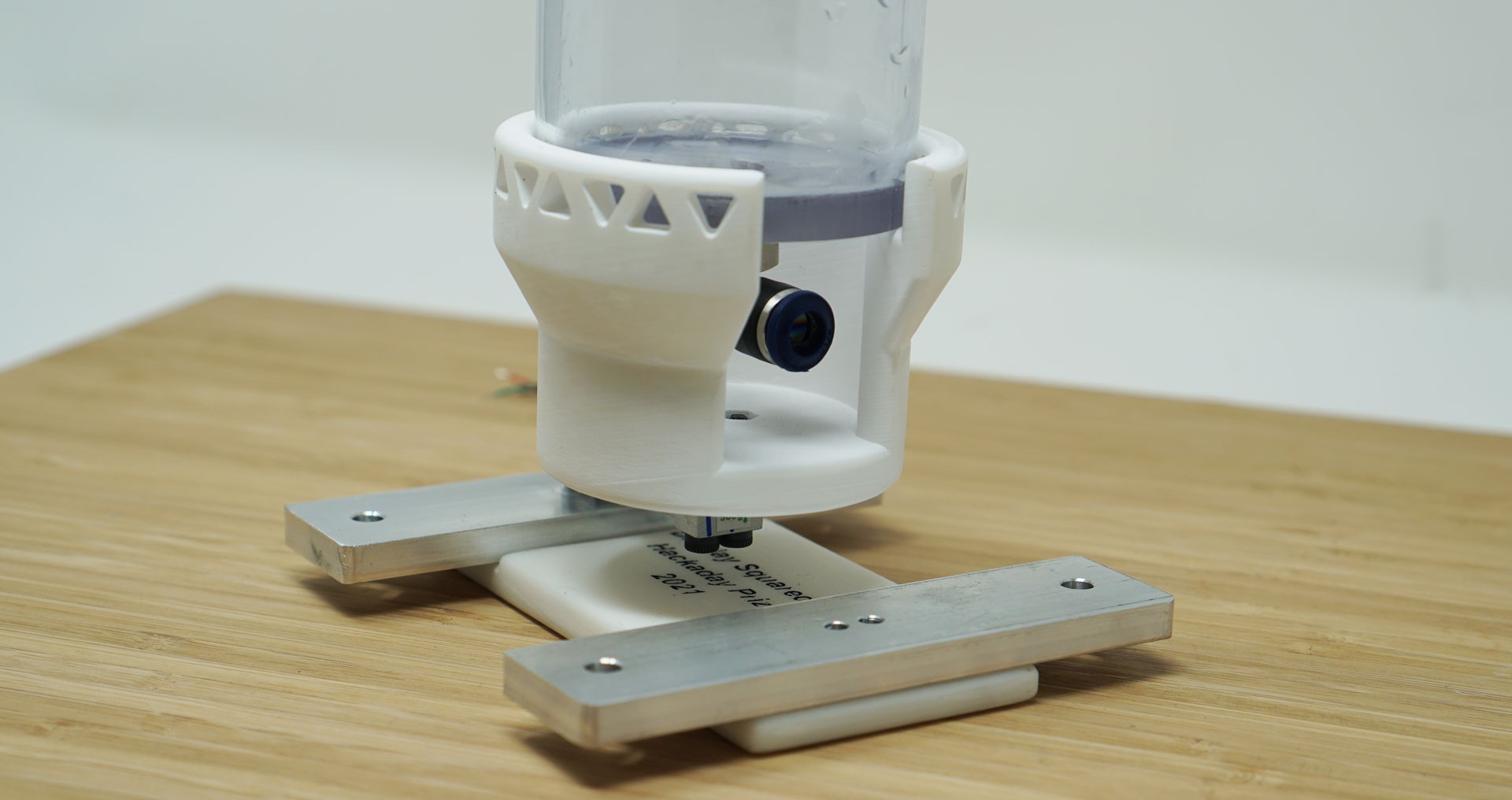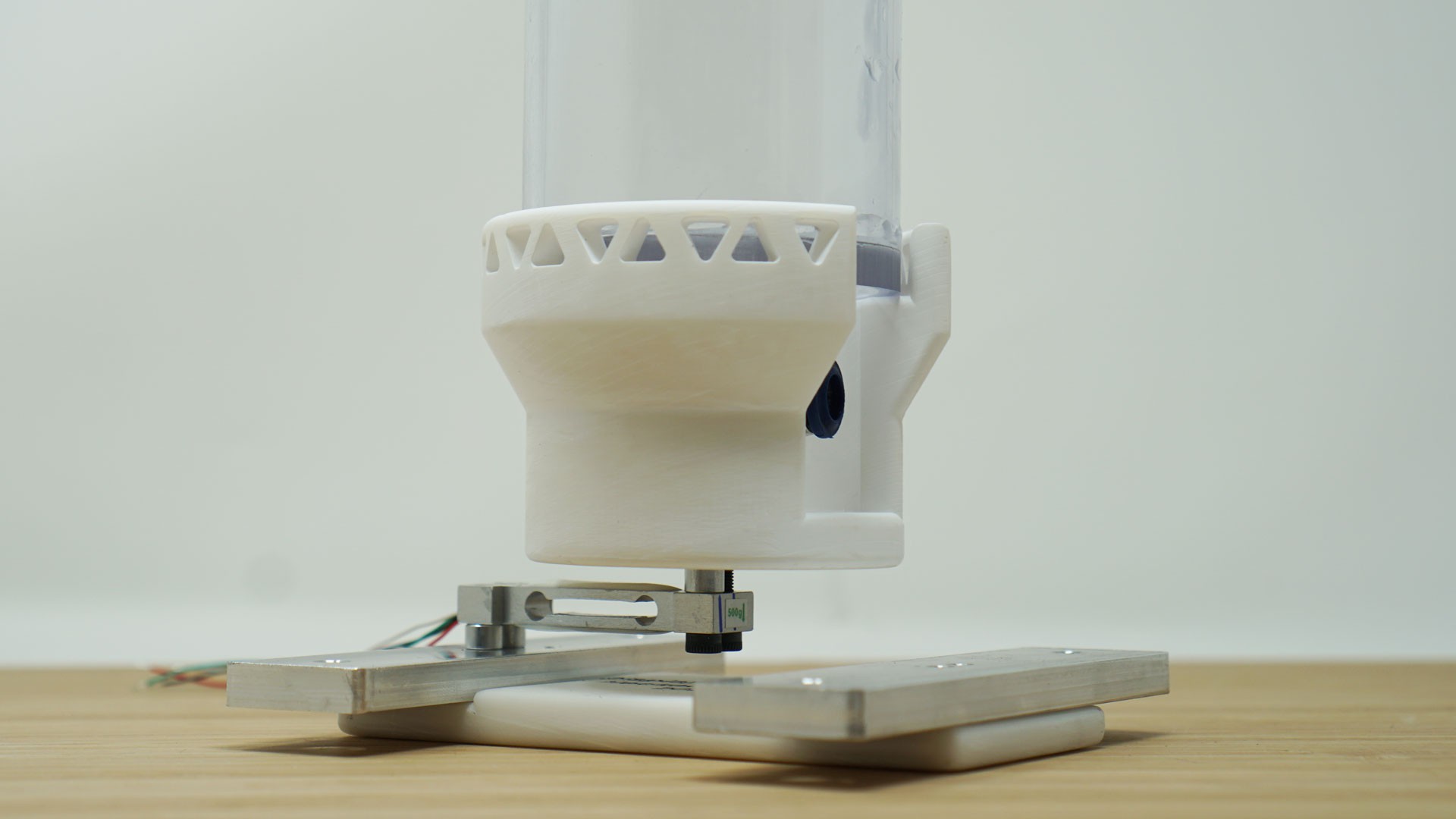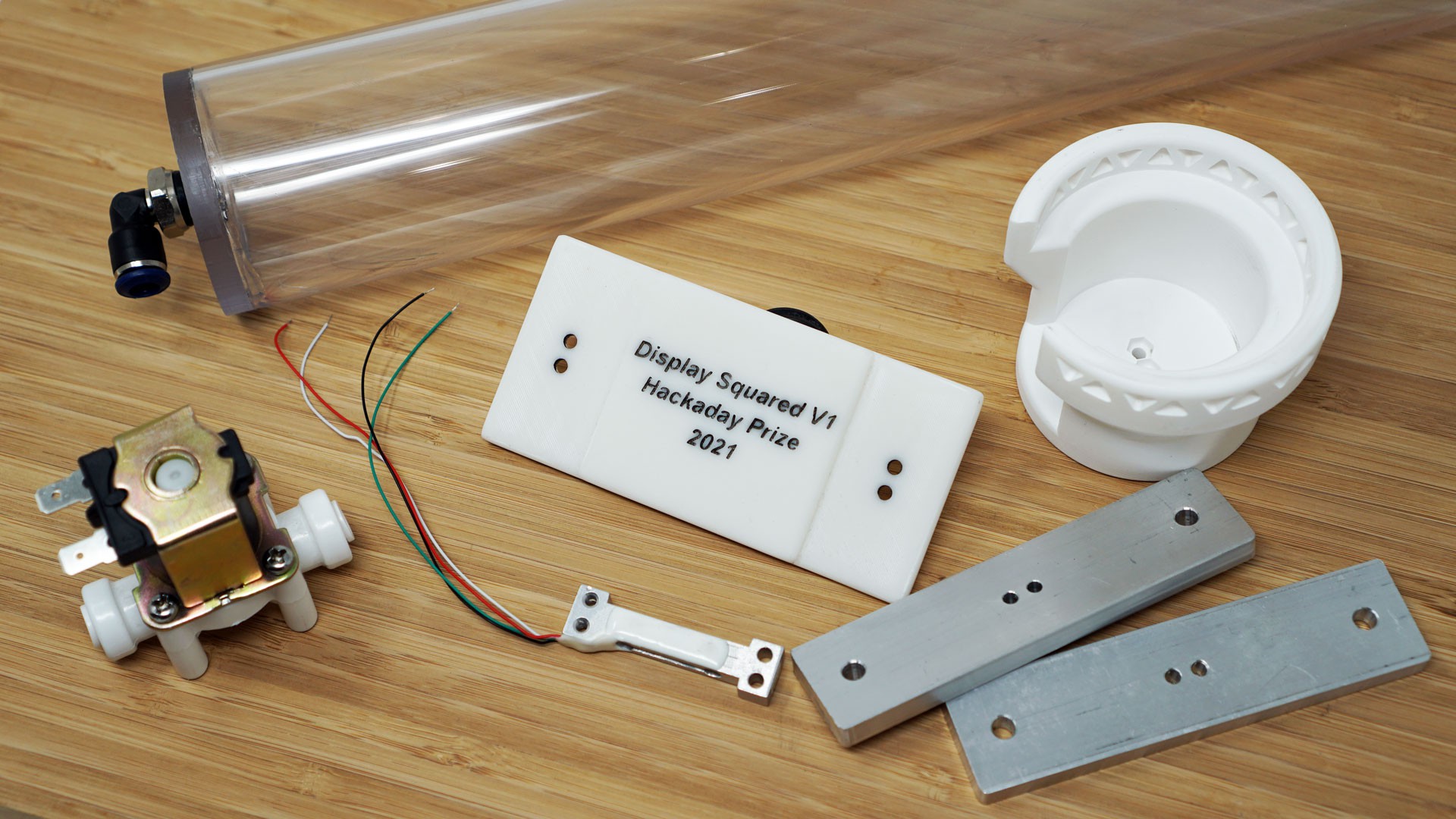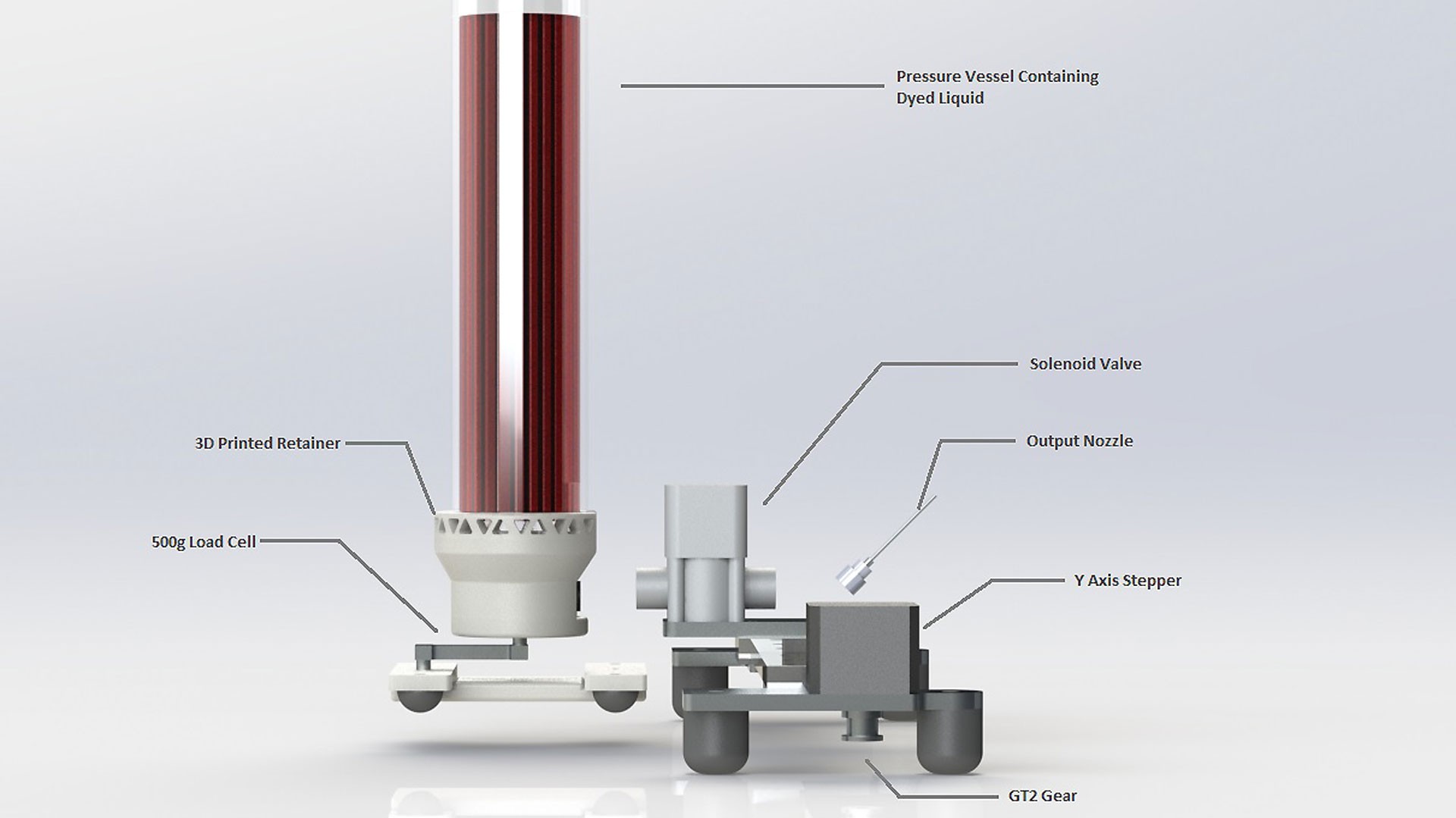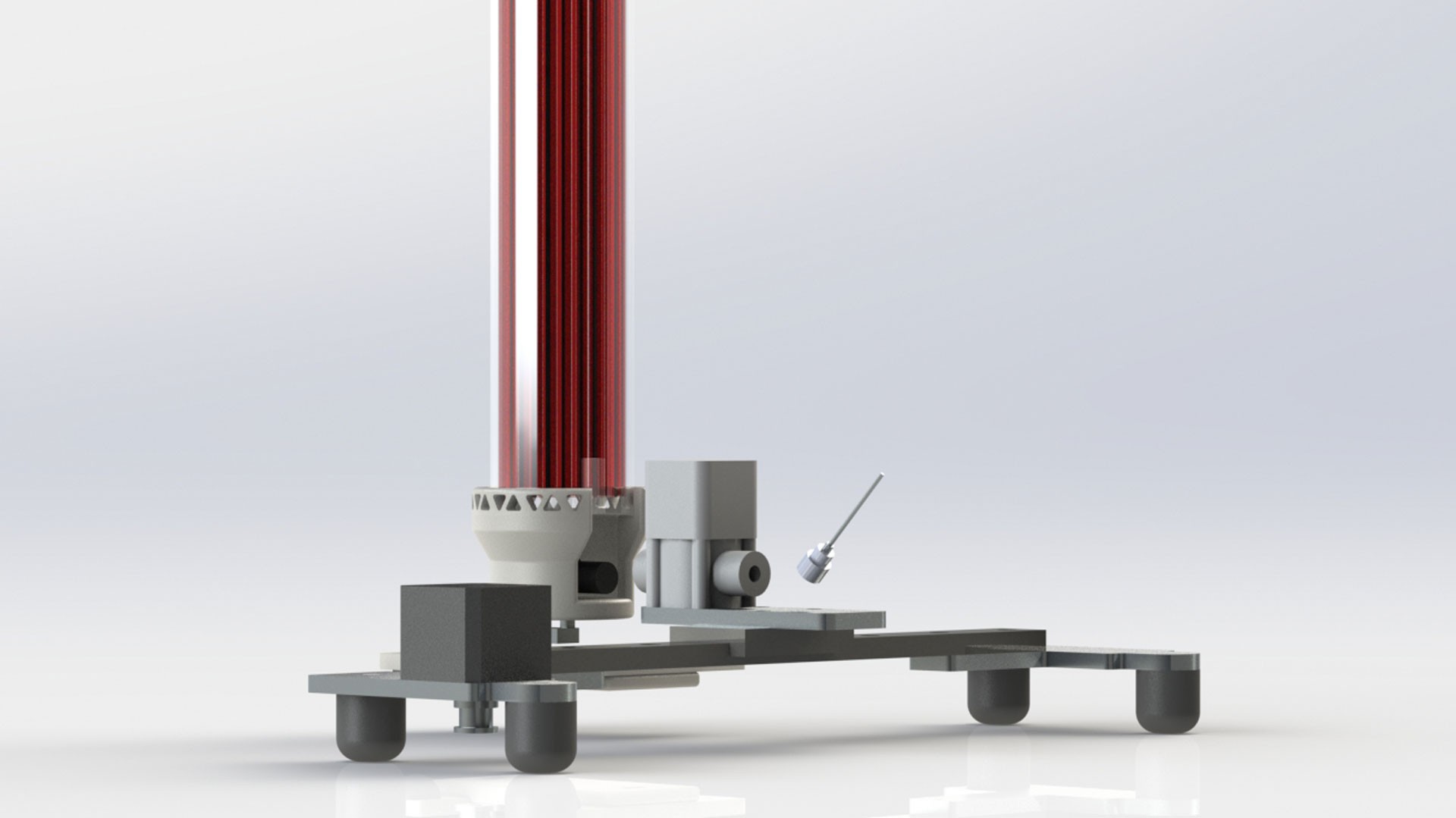The last major project I did was called Liquid Lite Brite. Frankly, I wanted to show a nearby medical device company that I could build something similar to their product so that they would hire me. That didn't work out, but I got hired at a pretty sweet company called RISE Robotics instead, and I got a cool portfolio project out of it as well so no hard feelings.
Here's a link to Liquid Lite Brite if you're curious. Below is a timelapse of Liquid Lite Brite building an image.
I really loved how that project turned out, and I enjoyed working on it as well. Naturally, I want to make an improved version. The core concept for Display Squared is the same as Liquid Lite Brite. I'm going to have several reservoirs of colored liquid, and I'm going to mix them together in individual cells to produce an image. The similarities stop there though, because pretty much every detail of how I go about doing that is going to differ. Here's a top level comparison:
| Liquid Lite Brite | Display Squared | |
| Resolution | 24 x 16 pixels | 100 x 56 pixels |
| Speed | 30 cells per minute | 300 cells per minute |
| Color Fidelity | Not great, only certain images work | Adobe called and they want their display back |
| Dispensing Mechanism | Peristaltic pump and 3 axis gantry | Pressure based liquid propulsion |
The part of this that I'm most excited about is the mechanism by which liquid will go from a reservoir to the proper cell. My plan here is to "aim" the liquid in the X axis using pressure. Here's a video showing the effect I'm talking about.
I'm going to pressurize the water and jet it through the air into the proper cell. To change cells, I'm going to increase or decrease the water pressure so that it travels less far. That will get me X axis travel, and then I'm going to rotate the nozzle assembly to give access to all 100 x 56 cells.
I want my entire pixel grid to be 400mm width by 225mm depth. This means that each cell will only be about 4mm x 4mm. That's a fairly small target to hit. Doing this on a small scale makes this considerably harder to engineer than the fountain in the YouTube video above! Accurately controlling the pressure of a vessel containing a liter of water is way easier than controlling the pressure of just a ml of water at a time. That said, I have some ideas for making it happen, and the napkin math works out for now. In the next update. I'll go over some of the basic mathematics required to make Display Squared work.
 zachfrew
zachfrew